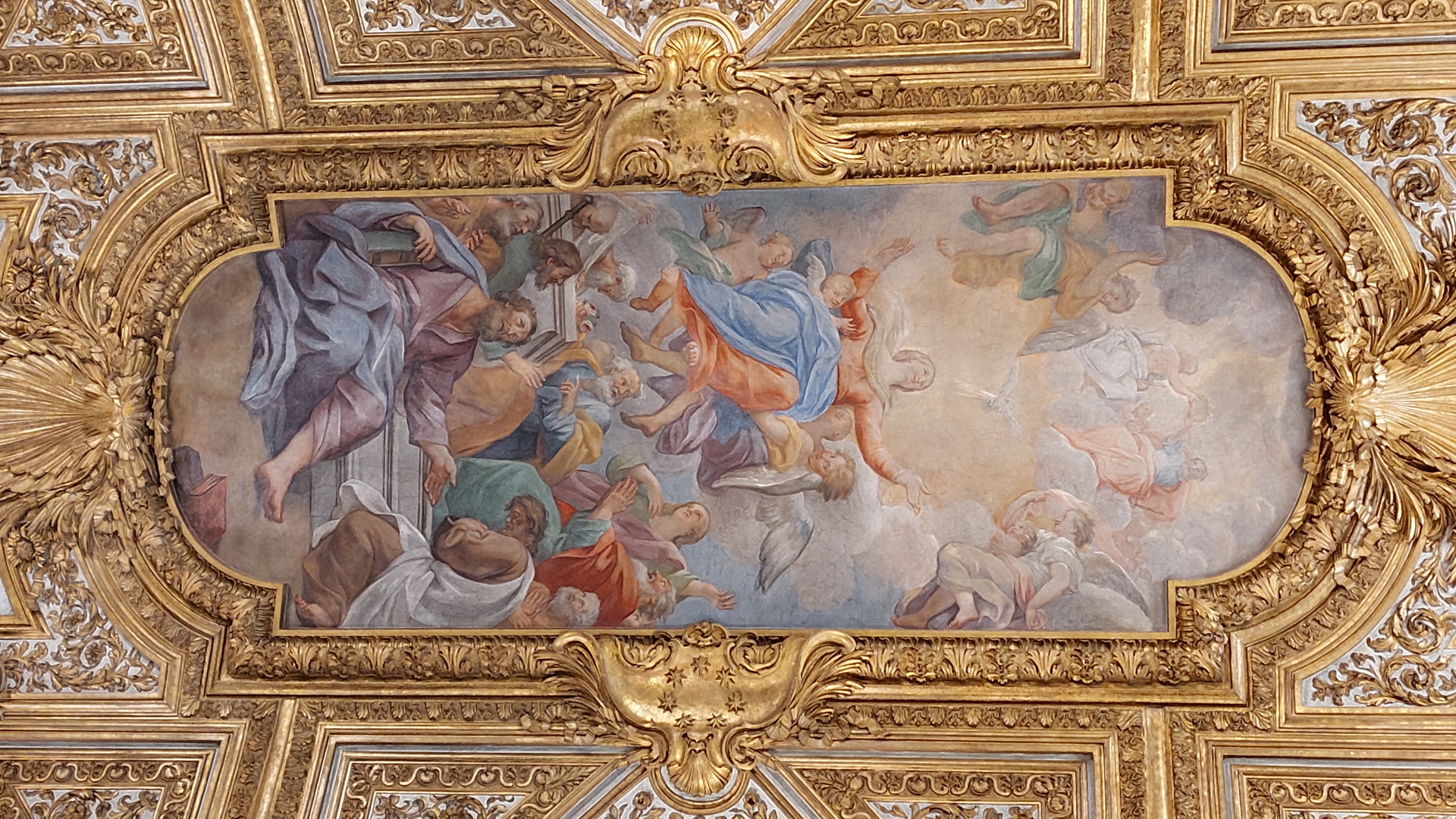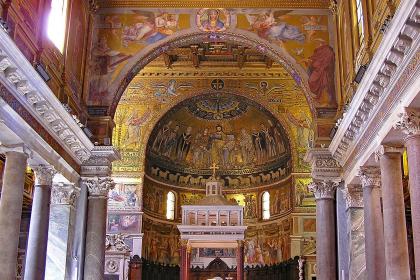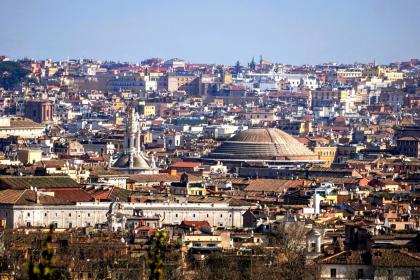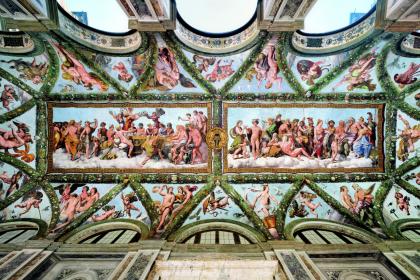
It rises in the Trastevere district and is the national church of the Japanese in Rome. The church owes its name to the fact that it was built in an area previously occupied by an expanse of vegetable gardens; on one of the border walls an image of the Virgin was painted to which, according to tradition, miraculous events were attributed. From this a popular devotion to the image was born and therefore the faithful built a small chapel on the site in 1492, while the current construction was begun in 1495.
The façade, designed by Jacopo Barozzi da Vignola but completed by Francesco da Volterra, has two orders divided by pilasters, with an arched portal between two columns and decorated with a row of small obelisks with the cross and an eighteenth-century clock . The interior with three naves with side chapels is due to Guidetto Guidetti, a pupil of Michelangelo, who transformed the original plan into a Greek cross with four apses into a Latin cross and three naves.
Inside there also is an eighteenth-century polychrome floor by Gabriele Valvassori, while on the main altar by Giacomo Della Porta, there is the venerated image of the Madonna and Child (mid-fifteenth century) and other works of art such as the Assumption of Mary by Giacinto Calandrucci (1706). In the apse we find valuable frescoes with Stories of the Virgin by Taddeo and Federico Zuccari (1560).
The small oratory is an authentic jewel of the Baroque.
Photo credits: courtesy of Church of Santa Maria dell’Orto official site
The Basilica of Santa Maria in Trastevere

 Condividi
Condividi
Janiculum Hill

 Condividi
Condividi
Villa Farnesina

 Condividi
Condividi
Information
For the timetable of the masses and visiting conditions, please consult the contacts.
 Condividi
Condividi
Location
To find out about all accessibility services, visit the Rome accessible section.











































